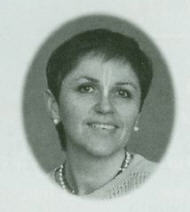
Yamuna Mataji
Sandesa: King of Bengali Sweets
IN 1971, MY SECOND YEAR living in India, I chanced upon a small tan paperback entitled Bengal Sweets. The author, Mrs. J. Haldar, dedicates her work to "the womanhood of Bengal, whose sweet beauty, sweet charm, sweet devotion, sweet grace, sweet manners, sweet temper, and sweet voice, often secreted behind the veil, are prominently revealed in the delicate aroma, the exquisite flavor, and the fascinating appearance of BENGAL SWEETS." Though written in old Indian English and a flowery 1940s kitchen style, the book is still one of the best references on techniques for making Bengali sweets. If you love sweets and you visit India, this book is worth ferreting out.
Sandesa, often called "the king of Bengali sweets," is the next topic in this cooking series. In an effort to describe sandesa, some writers call it India's counterpart to cheesecake. But it is not. It stands on its own as an elegant and simple-to-make cheese fudge.
The Elements of Sandesa
Plain sandesa is made from only two ingredients: sugar and soft unripe chenna cheese (milk curd). The texture of sandesa depends on several factors: the amount of whey left in the fresh cheese, the cheese consistency when brayed, the type of sugar used and whether in dry granular form or made into a syrup, the cooking time, the type of pan, and the type of heat. Sandesa broadly falls into two categories: fudgelike kara-pak, and soft, melt-in-your-mouth naram-pak.
The variety and quality of the two raw elements chenna cheese and sugar determine the finished attributes of plain sandesa. While good cheese does not ensure good sandesa, it greatly affects the outcome. Tasteless refined white sugar is widely used in India today, but people in earlier times made sandesa with unrefined cane or date-palm sugar, sweeteners that lend both flavor and color.
Besides plain sandesa, many other varieties are widely popular, including those flavored with saffron, powdered coconut, crushed cardamom seeds, or silky-smooth wet pastes of dates, mangoes, almonds, cashews, or pistachios. Like fine Swiss chocolates, some varieties are shaped in intricate molds that imprint designs on their surface, or they may be layered, or combined with a milk fudge called khoa.
Srila Prabhupada and Sandesa
Though gulabjamuns (also called Sweet Balls or ISKCON Bullets) were ISKCON's most popular sweet in the late 1960s, Srila Prabhupada also taught us how to make sandesa. My first lesson took place one October morning in 1969 in the kitchen of Prabhupada's small apartment at John Lennon's Tittenhurst estate. Without giving much instruction, Prabhupada made plain, soft sandesa. When he finished his batch, he asked me to do the same in front of him. I had trouble braying the cheese to the right consistency, and I cooked it over a flame that was too high, but the effort seemed to please him.
For as long as the sandesa batches stayed fresh, he asked that two small pieces one of his and one of mine be served with his breakfast daily. He often remarked how tasty they were.
Years later, while residing near Delhi's Bengali Market, Srila Prabhupada recalled how in his childhood first-class sandesa was available in the marketplace for five annas a kilo (sixteen annas made one rupee). In 1973, marketplace sandesa was thirty-five rupees a kilo, and Srila Prabhupada considered it barely edible. Fortunately, Prabhupada's cooks learned the art of making fine sandesa, so he was able to have sandesacooked by devotees.
Class Homework
If you are following these classes, prepare at least three or four types of sandesa from the class textbook, Lord Krishna's Cuisine. While working, keep your senses focused on pleasing the Lord, and enjoy what you are doing. Newcomers can try the recipe at left.
Yamuna Devi is the author of the award-winning cookbooks Lord Krishna's Cuisine: The Art of Indian Vegetarian Cooking and Yamuna's Table. She is a regular contributor to The Washington Post andVegetarian Times.
Date Sandesa
(Makes about 12 ounces)
Medjhool, a premier date grown in small quantity, is an excellent choice for fresh date sandesa. No matter what your choice, choose plump, shiny dates. Fresh dates are best, though you can also use plump dried ones.
fresh chenna cheese (milk curd) made from ½ gallon of milk
12 to 15 plump dates, pitted and cut into quarters
1. Place the dates in a food processor, cover, and pulse briefly; then process until semi-smooth. Unwrap the drained cheese, break it into pieces, and add it to the processor. Process until the cheese and dates are without graininess.
2. Transfer the mixture to a heavy-bottomed pan and cook it over the lowest possible heat. Stirring constantly, cook for 10-15 minutes or until the surface of the cheese becomes slightly glossy and the texture slightly thick. (The sandesa will continue to firm up as it cools.)
3. Scrape the sandesa onto a buttered tray, and with clean oiled hands roll the sandesa into 1-inch balls. Store them in single layers, separated by parchment or waxed paper. Refrigerate the sandesa in a well-sealed container until ready to offer to the Lord. (Keeps up to 3 days.)
